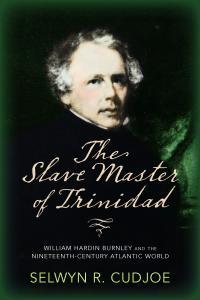Making Tacarigua a better scene
By Dr Selwyn R. Cudjoe
June 16, 2024
I am always intrigued by how officials, government or otherwise, ignorant of the history of a place or region in which they live and work, are perfectly happy to destroy a healthy community without realising the harm they can do to the place and the people who live there.
Desell Josiah Austin, chairman of the Tunapuna/Piarco Regional Corporation, may be a young man with the best intentions in the world, but without knowledge of the community in which he lives he can cause harm. He really needs to learn a bit more about Tacarigua, the history of the Orange Grove Savannah, and the origin of Tunapuna.
Tacarigua, as Austin must know, is one of the oldest villages in Trinidad. It was first mentioned around 1645 when it was named as one of four grants under the encomienda system in the island. In fact, the Tacarigua ward includes Tunapuna, St Joseph and many of the surrounding areas.
In 1995, I documented the history of Tacarigua in a short book called "Tacarigua: A Village in Trinidad" when we celebrated our 346th anniversary as a community.
In 1825, Alison Carmichael, a member of the "upper end of the social spectrum of Scots in the Caribbean", described the grandeur of William Hardin Burnley's mansion in Domestic Manners and Social Condition of the White, Coloured and Negro Population of the West Indies when she came to live in Laurel Hill, a village adjacent to Tacarigua. William Milne-Home, another European, changed the name of Laurel Hill to Five Rivers when he lived there later on.
She says: "One of our near neighbours was the Honourable William Burnley at Orange Grove, and I was much charmed by the aspect of this place. Not that I considered its natural beauties at all comparable to Laurel-Hill, but it remains a marvel to me to this day, how the remarkable neatness of that place was effected by Negro labourers.
The house stands in a park of some extent, studded with fine natural wood, and dotted with abundance of better looking sheep than one usually sees in the West Indies...Orange Grove was, however, a very charming place to look at, and a very delightful place to visit."
This is the mansion I saw as a boy growing up in Tacarigua and the greens upon which we play football and cricket. Built in 1822, the mansion was constructed with tapia (a mixture of mud and leaves and local wood) and graced with tall palm trees around it. A natural pond that produced beautiful water lilies stood at the side of his mansion.
The road that led from the Eastern Main Road (it was called the Royal Road then) to his mansion was lined with eight or ten samaan trees. The only one that remains stands to the east of the St Mary's Anglican Church. In the nineteenth and early twentieth centuries, Trinidad newspapers chronicled Trinidadians from various parts of the island who picnicked on the Orange Grove grounds.
The grandeur of this mansion—if not as elegant—can be compared with Drax Hall in Barbados, one of the three Jacobean mansions in the western hemisphere. It was built in 1654. Sean Carrington describes this magnificent building: "The house is typically Jacobean, with steep gables and other finials carved from stone, and an exceptionally fine Jacobean staircase and ornately carved hall archways of mastic wood." (A-Z of Barbados Heritage.)
The major difference between Burnley's mansion and Drax Hall is that the latter is still standing while Burnley's mansion was torn down in the 1960s.
Tunapuna only came into being at the beginning of the 19th century. The Trinidad Slave Register of 1813 lists Tunapuna as follows: "TUNA PUNA [two words]. The plantation Tuna puna, in the quarter of St Joseph, a provision plantation owned by Antonia Delaone of which the said Antonia Delaone is in possession. The family of Delaone is in possession. The family of Delaone lived on the plantation (Maria, Negro, Laborer 22, African; Manuel son, 21; Francisco 55, African Mandingo; 3 slaves)."
In Landscape and Memory, Simon Schama writes that "landscapes are culture before they are nature; constructs of the imagination projected onto the wood and water and rock".
He warns that "once a certain idea of landscapes, a myth or vision establishes itself in an actual place, it has a peculiar way of muddling categories, of making landscapes more real than the referents, of becoming, in fact, part of the scene". Tacarigua districkers need to be aware of this danger.
I am not altogether unsympathetic with Austin's pragmatism and youthful enthusiasm. I only wish he can learn that to build community, the bedrock of any development, one must know about that community and work with them to make it a better scene.
—Prof Cudjoe's e-mail address is scudjoe@wellesley.edu. He can be reached @ProfessorCudjoe.
Share your views here...

The Slave Master of Trinidad by Dr. Selwyn R. Cudjoe
|

